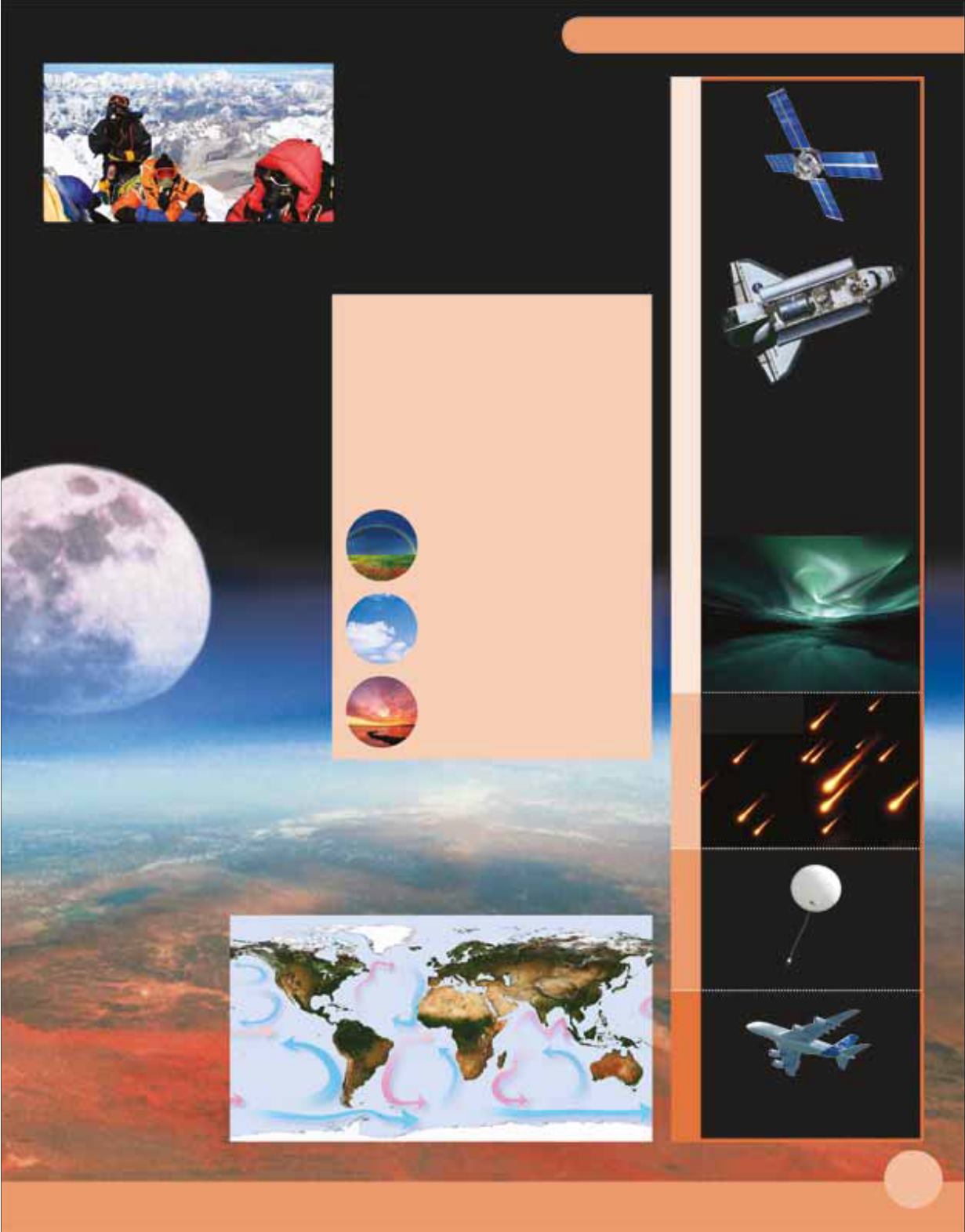
263
Into thin air
Like everything else, air is
pulled by gravity. Most air
molecules are pulled close to
the ground, where the air is
thick and easy to breathe.
Higher up, air is so thin that
climbers need oxygen tanks.
100 km (62 miles).
Moving water
The atmosphere is always swirling around,
creating winds. The winds push on the oceans,
causing the water to swirl too. These swirling
currents carry warmth around the planet.
Layers of the atmosphere
The atmosphere is made up of
layers, each with a different
name. The bottom layer is the
troposphere, where clouds form
and planes fly. Above this, the
air gets thinner and thinner as
the atmosphere merges into space.
500 km (310 miles)
85 km (53 miles)
Shooting stars
50 km
(31 miles)
10 km (6 miles)
Space shuttle
Satellite
Northern lights
Jumbo jet
Weather
balloon
THERMOSPHERE
MESOSPHERE
STRATOSPHERE
TROPOSPHERE
The sky
looks blue on clear
days because air molecules
scatter blue light the most.
At sunset
and sunrise, dust
and hazy cloud in the air
turn the sky orange and red.
Rainbows
form when water
droplets reflect sunlight and
split it into different colours.
Light spectacular
Sunlight can create
dazzling effects as it
strikes the atmosphere
and is scattered by air,
water, and dust.
The atmosphere


